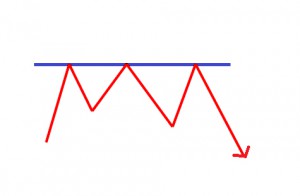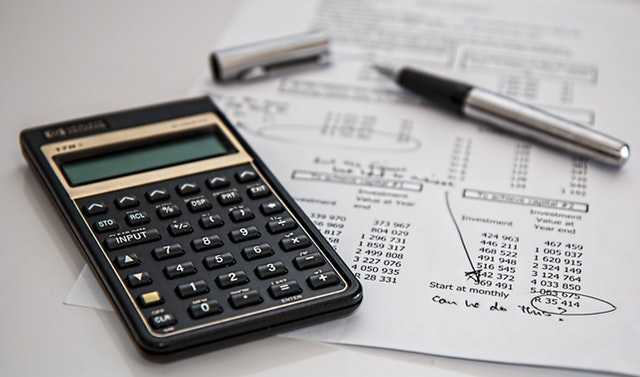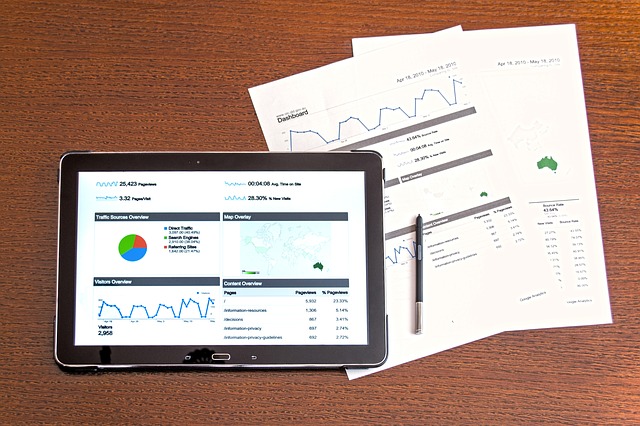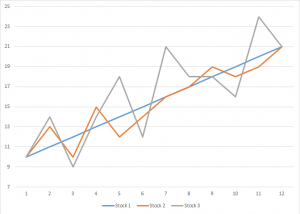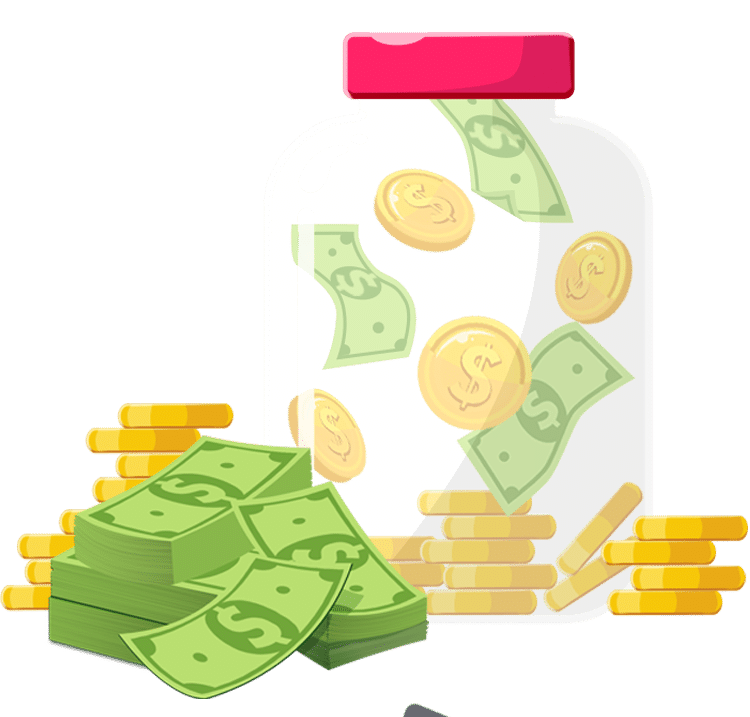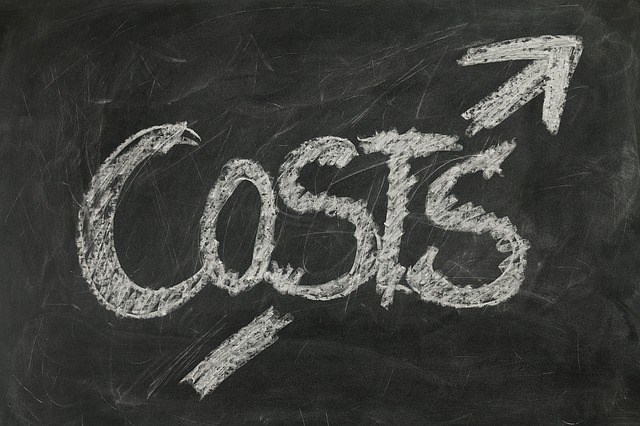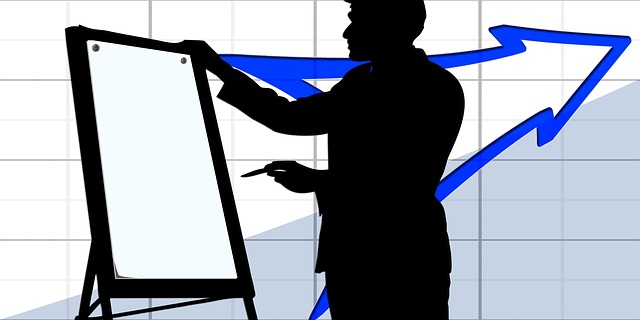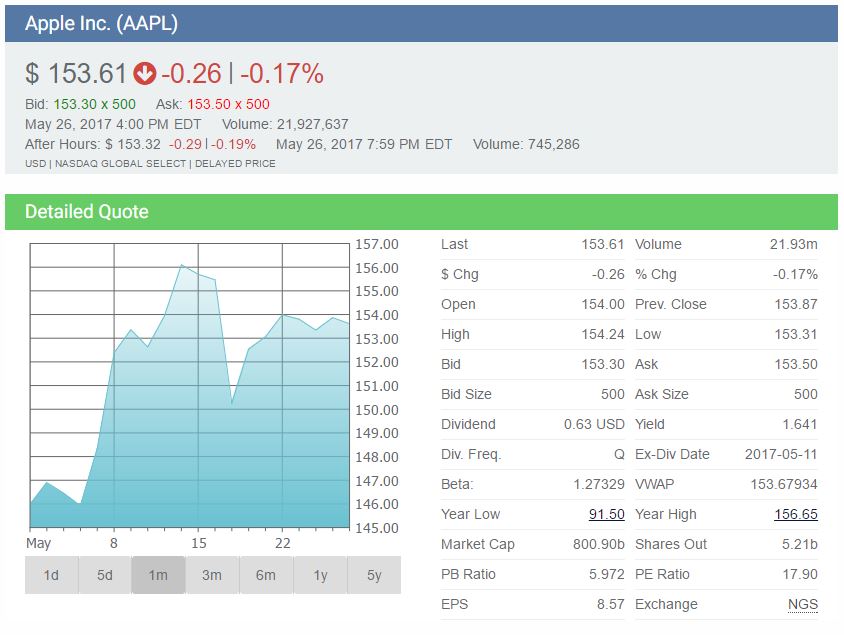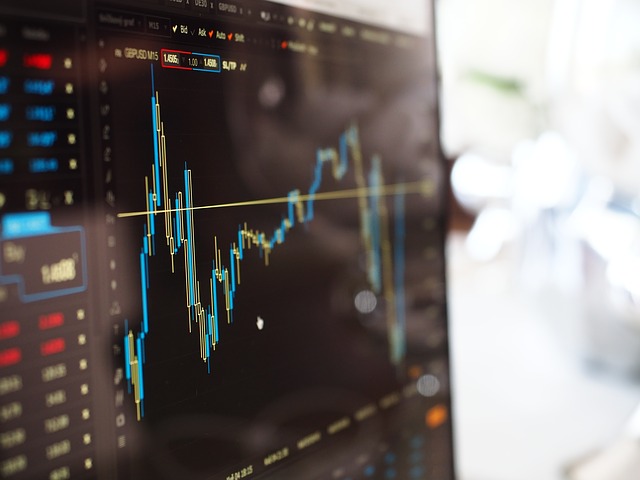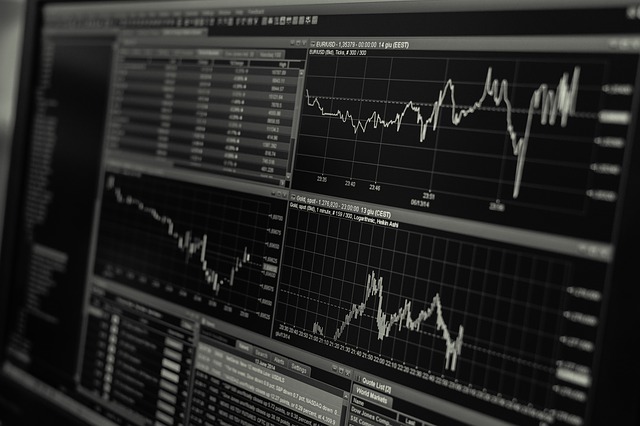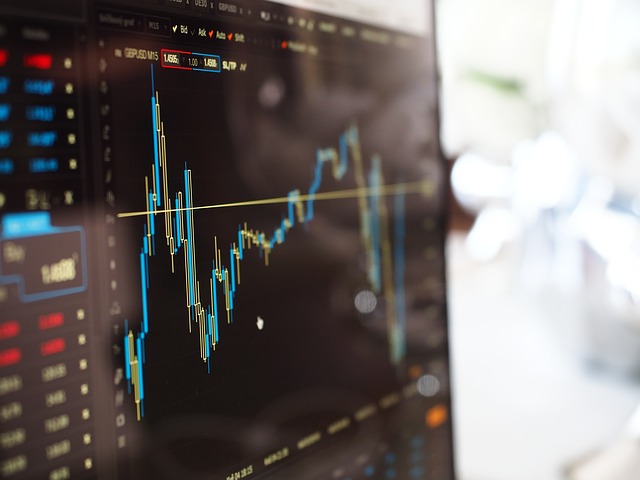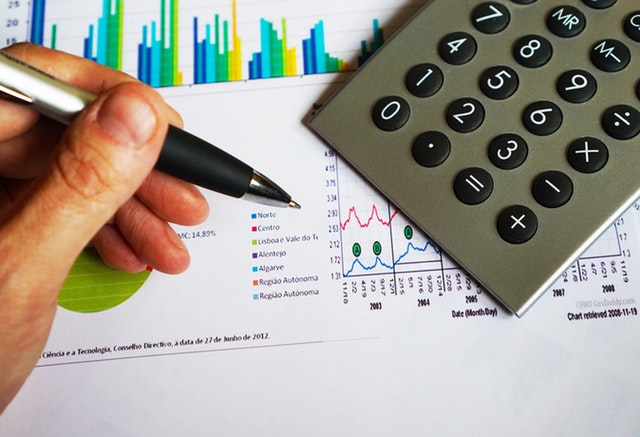A point on a candle stick chart representing a specific time period (a day, an hour, a minute, etc) in which the underlying stock price has moved. Candlesticks will have a body and usually two wicks – one on each end. For a white (could also be green) candlestick, the bottom of the body represents the opening price and the top of the body represents the closing price. For red candlesticks, it is just the other way around. The top and bottom tips of each wick are the day’s highest and lowest price respectively.

A small line (like a candle wick) found at the top or bottom of an individual candle in a candlestick chart. The shadow illustrates where the price of a stock has fluctuated relative to the opening and closing prices. A shadow can be located either above the opening price (upper shadow) or below the closing price (lower shadow). These shadows illustrate the highest and lowest prices at which a security has traded during a specific period of time. When there is a long shadow on the bottom of the candle (like that of a hammer) there is a suggestion of an increased level of buying and, depending on the pattern, potentially a bottom.
An investment strategy that aims to capitalize on the continuance of existing trends in the market. The momentum investor believes that large increases in the price of a security will be followed by additional gains and vice versa for declining values.
A point or range in a chart that caps an increase in the price of a stock or index over a period of time. An area of resistance, resistance line or resistance level indicates that the stock or index is finding it difficult to break through it, and may head lower shortly. The more times that the stock or index tries unsuccessfully to break through the resistance line, the stronger that area of price resistance becomes.
How To Use Price-To-Sales Ratios To Value Stocks
The price-to-sales ratio (Price/Sales or P/S) provides a simple approach: take the company’s market capitalization (the number of shares multiplied by the share price) and divide it by the company’s total sales over the past 12 months. The lower the ratio, the more attractive the investment. As easy as it sounds, price-to-sales provides a useful measure for sizing up stocks. But investors need to be mindful of the ratio’s potential pitfalls and possible unreliability.
How P/S Is Useful
In a nutshell, this ratio shows how much Wall Street values every dollar of the company’s sales. Coupled with high relative strength in the previous 12 months, a low price-to-sales ratio is one of the most potent combinations of investment criteria. A low P/S can also be effective in valuing growth stocks that have suffered a temporary setback.
In a highly cyclical industry such as semiconductors, there are years when only a few companies produce any earnings. This does not mean semiconductor stocks are worthless. In this case, investors can use price-to-sales instead of the price-earnings ratio (P/E Ratio or PE) to determine how much they are paying for a dollar of the company’s sales rather than a dollar of its earnings. P/S is used for spotting recovery situations or for double checking that a company’s growth has not become overvalued. It comes in handy when a company begins to suffer losses and, as a result, has no earnings (and no PE) with which investors can assess the shares.
Let’s consider how we evaluate a firm that has not made any money in the past year. Unless the firm is going out of business, the P/S will show whether the firm’s shares are valued at a discount against others in its sector. Say the company has a P/S of 0.7 while its peers have higher ratios of, say, 2. If the company can turn things around, its shares will enjoy substantial upside as the P/S becomes more closely matched with those of its peers. Meanwhile, a company that goes into a loss (negative earnings) may lose also its dividend yield. In this case, P/S represents one of the last remaining measures for valuing the business. All things being equal, a low P/S is good news for investors, while a very high P/S can be a warning sign.
Where P/S Fall Short
That being said, turnover is valuable only if, at some point, it can be translated into earnings. Consider construction companies. They report very high sales turnover, but, with the exception of building booms, they rarely make much in the way of profit. By contrast, a software company can easily generate $4 in net profit for every $10 in sales revenue. What this discrepancy means is that sales dollars cannot always be treated the same way for every company.
Many people look at sales revenue as a more reliable indicator of a company’s growth. Granted, earnings are a complicated bottom-line number, whose reliability is not always assured. But, thanks to somewhat hazy accounting rules, the quality of sales revenue figures can be unreliable too.
Learn how to use penny stocks & beat the stock market!
Comparing companies’ sales on an apples-to-apples basis hardly ever works. Examination of sales must be coupled with a careful look at profit margins and their trends, as well as with sector-specific margin idiosyncrasies.
Debt Is a Critical Factor
A firm with no debt and a low P/S metric is a more attractive investment than a firm with high debt and the same P/S. At some point, the debt will need to be paid off, so there is always the possibility that the company will issue additional equity. These new shares expand market capitalization and drive up the P/S.
Companies heavy with corporate debt and on the verge of bankruptcy, however, can emerge with low P/S. This is because their sales have not suffered a drop while their share price and capitalization collapses.
So how can investors tell the difference? There is an approach that helps to distinguish between “cheap” sales and less healthy, debt-burdened ones: use enterprise value/sales rather than market capitalization/sales. By adding the company’s long-term debt to the company’s market capitalization and subtracting any cash, one arrives at the company’s enterprise value (EV).
Think of EV as the total cost of buying the company, including its debt and leftover cash, which would offset the cost. EV shows how much more investors pay for the debt. This approach also helps eliminate the problem of comparing two very different types of companies:
The kind that relies on debt to enhance sales and
The kind that has lower sales but does not shoulder debt.
The Bottom Line
As with all valuation techniques, sales-based metrics are just the beginning. The worst thing that an investor can do is buy stocks without looking at underlying fundamentals. Low P/S can indicate unrecognized value potential – so long as other criteria like high profit margins, low debt levels and growth prospects are in place. In other cases, P/S can be a classic value trap.
High inflation and high unemployment occurring simultaneously.
Definition
A security with a guarantee of a return rate that is higher than the rate of inflation if it is held to maturity. Inflation-indexed securities link their capital appreciation, or coupon, to inflation rates. Investors who are seeking safe returns with little risk often hold inflation-indexed securities.
An inflation-indexed security guarantees a real return. Real return securities are usually bonds or notes, but may also come in other forms. Since these types of securities offer investors a very high level of safety, the coupons attached to such securities are typically lower than notes with a higher level of risk.
The fee charged by a broker or investment advisor in exchange for investment advice and/or handling the purchase or sale of a security. Commissions vary from brokerage to brokerage.
There are two basic types of broker. Discount brokerages offer little or no advice. These type of brokerage companies can be problematic for rookie investors but save a lot of money for those who have a basic understanding of the market. On the other hand, full-service brokerages offer more services, but commissions are much higher.
There is potential for a conflict of interest between brokerages and their clients when a commission is charged. For agents that make most of their money from commissions, they do not get paid if their clients do not do regular trades. Unethical brokers have been accused of encouraging clients to conduct more trades than necessary.
Past performance is not an indication of future performance. How many times have you heard that? Of course, earnings estimates provide one strong measure of potential future performance and are a mainstay of stock investing research.
Earnings estimates are exactly what they sound like: an estimate of forecasted earnings. Notice the built in ambiguity? It’s there for a good reason. Revised estimates are a given contingent upon market conditions, the overall economy and other unforeseen forces impacting the profitability of the company.
You might wonder how analysts get away with forecasting earning estimates only to revise them, repeatedly, at the first sign of trouble. All too often, the average investor has already acted on the first estimate and is left holding a rapidly declining security – sans fees. Is there a solution? Yes, search for companies with upwardly revised earnings estimates and steadily rising analyst ratings.
What are they doing with your money? Have you ever wondered how well your money is really being managed by the corporations you hand it over to? After all, the media is full of stories about CEO compensation reaching new heights, buy-outs of non-profitable holdings, million dollar birthday parties and other horror stories.
Return on Equity (ROE) is used to measure how much profit a company is able to generate from the money invested by shareholders. Think of this way; if your teenager asked to borrow $1,000 to start-up a small side business then chances are you would comply. When they came back to ask for $10,000 you would examine how well they performed with the initial $1,000 before making the next loan.
It makes such good sense that you might wonder why more people don’t use this handy little measure before pouring massive sums into a money pit masking as a company. Join the ranks of those in the know. ROE is easy to compute and provides valuable insight into the workings of the company. Think twice before investing in a company with a negative ROE. Instead, search out self-sustaining companies with a healthy ROE that indicates the willingness and ability to use invested dollars for future growth rather than operating expenses. A good ROE is 15% or better so keep your eyes and ears open for opportunity.
What is the PEG, or Projected Earnings Growth? In the article on Price to Earnings Ratio or P/E, I mentioned that this number gave you an idea of what value was placed on a company’s earnings. The P/E is the most usual way to compare the relative value of stocks based on earnings since you calculate it by taking the current price of the stock and divide it by the Earnings Per Share (EPS).
This helps identify if a stock’s price is high or low relative to its earnings. Some will say a company with a high P/E is overpriced and they may be correct. A high P/E may warn you that traders have raised a stock’s price past the point where any acceptable near term growth is feasible. But, a high P/E may also signal that the company still has strong growth prospects in the future, which could predict an even higher PPS (price per share).
Because the market cares more about the future than the present, it is always looking for some way to predict it. Another indicator you can use to help you look at future earnings growth is called the PEG ratio. Price/Earnings To Growth, is a valuation metric for determining the relative trade-off between the price of a stock, the earnings generated per share (EPS), and the company’s expected future growth. PEG is a widely employed indicator of a stock’s possible true value.
You calculate the PEG by taking the P/E and dividing it by the projected growth in earnings. PEG = P/E / (projected growth in earnings). For example, a stock with a P/E of 60 and projected earning growth next year of 30% would have a PEG of 2 (60 / 30 = 2). What does the “2” mean? Like all ratios, it simply shows you a relationship. In this case, the lower the number the less you pay for each unit of future earnings growth. So even a stock with a high P/E, but high projected earning growth may be a good value. In other words, a lower ratio is “better” (cheaper) and a higher ratio is worse” (expensive). The PEG ratio of one represents a fair trade-off between the values of cost and the values of growth, then the stock is reasonably valued given the expected growth.
Similar to PE ratios, a lower PEG means that the stock is undervalued more. It is favored by many over the price/earnings ratio because it also accounts for growth. If a company is growing at 30% a year, then the stock’s P/E could be as high as approximately 30. PEG ratios between 1 and 2 are therefore considered to be in the range of normal values. A crude analysis suggests that companies with PEG values between 0 to 1 may provide higher returns. Looking at the opposite situation; a low P/E stock with low or no projected earnings growth, you see that what looks like a value may not work out that way. For example,a stock with a P/E of 8 and flat earnings growth equals a PEG of 8. This could prove to be an expensive investment.
A few important things to remember about PEG: (a) Investors may prefer the PEG ratio because it explicitly puts a value on the expected growth in earnings of a company. The PEG ratio can offer a suggestion of whether a company’s high P/E ratio reflects an excessively high stock price or is a reflection of promising growth prospects for the company. (b) The PEG ratio is less appropriate for measuring companies without high growth. Large, well-established companies, for instance, may offer dependable dividend income, but little opportunity for growth. (c) A company’s growth rate is an estimate. It is subject to the limitations of projecting future events. Future growth of a company can change due to any number of factors: market conditions, expansion setbacks, and hype of investors. (d) The convention that (PEG=1) is appropriate is somewhat arbitrary and considered a rule of thumb metric.
The question of when to sell stocks is not easily answered. On the one hand, you know a correction is coming but the question of “when” isn’t so clear. Anyone who has ever sold early only to stand by and watch others reap in huge profits have felt the pain of premature sales.
Sure, once the correction finally comes you might have some consolation but by that point your brother-in-law has a new convertible so what do you care that you were “right” but just a little early. Of course, the only thing worse than selling out early is selling late. Nobody wants to be the idiot holding the hot potato once the market cools. So, where is the happy medium?
1. Set a Sell Strategy in Advance… then stick to it! What is your performance goal for this stock? If it is 10% then sell when it reaches 10% and move on. Learn not to look back. Everyone has those “could have – would have” stories.
2. Cut Losers. Admit when you have made a mistake. Live and learn. It’s part of the game.
3. Put it into writing. Use trailing stops or stop loss orders and other techniques to remain focused and take the emotion out of the equation.
Definition
Stock Volatility is the measurement of how much a stock moves up and down in a given amount of time. The more volatile the stock, the more “movement” you will see in its stock chart.
Example
Consider the following 3 stocks:
All 3 of these stocks had the same growth rate between period 1 and period 12, but they had very different volatility.
Stock 1 was the least volatile, growing at a constant rate throughout the entire time.
Stock 2 was in the middle, it moved up and down but was fairly consistent.
Stock 3 was very volatile, with huge swings up and down over time.
How Do We Use It?
How you treat volatility depends on how you see yourself in the stock market. The average investor, who makes fairly few trades and is just trying to make their savings grow, does not like volatility, since they want consistent returns over time. Traders, who often trade multiple times per day, are trying to always “buy low and sell high”, so stocks that move up and down a lot are the best place to make profit.
However, a few bad trades, where a trader accidentally “sells low and buys high” can cause huge losses. For this reason, most investors concerned with “Capital Preservation” try to avoid volatility.
For more information on volatility, and how it affects your portfolio, read about the Sharpe Ratio (Beginner).
Congratulations! You just made your first stock trades and now you’re sitting back waiting for them to take off and make you a millionaire.
You see a few of them inching higher just like you had hoped, but one of your stocks is starting to fall. It is the moment of truth. Should you sell the loser and cut your losses? Is there a chance it will recover? What should you do if it doesn’t? One big loser can eliminate a solid year of gains — don’t let this happen to you.
The stock market slide in 2008 cost investors over $1 trillion in paper losses. This bear market has been the wake up call which reminds us of the risk inherent in the stock market, and more importantly, the need to protect our portfolios from major losses. It is impossible to predict what the market will do today, tomorrow or next year, but there is one thing that is definite: markets go up, they go down, and they stay the same.
There is so much information available about how to find the hot stocks, yet there is very little information available about how to handle the stocks you already own. One of the many overused market clichés is “Ride your winners and cut your losses.” However, this is one that must be followed. As an example, suppose you pick 10 stocks and invest $10,000 in each one. At the end of the first year if 7 of the stocks are up 10%, two are unchanged, and one has gone bankrupt, your $100,000 portfolio is now $97,000. That math doesn’t seem right at first: you picked 7 winners and only one loser. However, the math doesn’t lie. If you think only suckers hold stocks that go bankrupt, let me remind you of such blue chippers as MCI, KMart, Enron, GM and many others that were once huge stocks and now cease to exist. The rule of thumb is to limit your losses to 10% or less.
So in our example, if you had sold your loser at $9,000 (a 10% loss) instead of holding it to the bitter end, your portfolio would have been worth $106,000. The lesson here is that the stock market is full of risk and every dollar that you invest in a stock is at risk for a 100% loss. That doesn’t mean that you shouldn’t be investing in the market; it simply means that you should be taking every precaution to ensure that you minimize your losses.
Using Stop Loss Orders
When you buy a stock, there is a way to ensure that you minimize your losses on all of your trades. By placing stop losses on all of your trades, you virtually guarantee that your losses do not exceed a certain amount. A stop loss is an order placed with a broker to sell a security when it reaches a predetermined price or percentage. For example, if you buy Apple (AAPL) for $150 and you do not want to lose more than 10% of your investment, you simply place a stop order at $135. If Apple’s price drops below $135, your holding is automatically sold. Similarly, if you bought AAPL at $100 and it is trading at $150 then you currently have a nice profit of $50 a share, or 50%. At this point you can lock in your profits, and put in a stop order at $120 and enjoy the peace of mind. One advantage of using stop losses includes peace of mind; the ability to step away form your computer without worrying that you will lose your savings while you are gone and eliminating some of the inherent dangers of volatility in the market. Stop losses enable traders act with logic and discipline. Stop losses make sure you stay on track. If you always put a 5% stop on all your trades, you assure yourself that you will NEVER lose more than 5%. A stop loss is a straightforward, simple tool that allows traders to minimize losses, yet many people do not use them.
Take risk out of the market and practice using stop losses in your How The Market Works portfolio. So, what stop loss percentage should you use? William O’Neil, the founder of Investor’s Business Daily, has done lots of research on this topic and his recommendation is 8%. As soon as you buy a stock, immediately but a stop loss at 8%. Revisit that order every month and if your stock has increased in price, adjust your stop loss order accordingly. A more dynamic strategy gaining a lot of attention lately is from a company called SmartStops.net, founded by Chuck Lebeau. SmartStops provides both short-term and long-term stops that trigger when your stock or ETF fall into that range. Smartstops uses advanced mathematics that adjusts to follow an uptrend longer but quickly react to a downturn.
The golden rule of stock investing dictates cutting your losses when they fall 10 percent from the price paid, but common wisdom just might be wrong. Instead, use some common sense to determine if it’s time to hold or fold.
- Diversification. If your total portfolio is down 10 percent, but diversified then the diversification itself is one layer of protection. Don’t automatically assume you need to sell all of your stocks and start over.
- Dividends. If the stock pays dividends, then calculate the total dividend plus stock price in your estimates before making the decision to sell.
- Dumb Pricing. If you paid too much to begin with, then a 10 percent correction will often work it’s way out if you hold a bit longer. Just stop buying high and learn your lesson in the future. Then again, extra caution is advised because if you bought wrong to begin, then there is little chance you have the required savvy to know when it’s time to fold.
The final rule of investing is to make informed decisions so instead of blindly following the 10 percent rule, use the following recovery estimates and averages. Remember, a 25 percent return on investment is a strong return, 100 percent is very rare. Beyond that is a long tail that cannot be relied upon or properly forecasted. With that in mind …
| If stock drops | Then the stock must gain to break even |
| 5% | 5.26% |
| 10% | 11.1% |
| 20% | 25.0% |
| 30% | 42.86% |
| 40% | 66.67% |
| 50% | 100% |
As this table shows, cutting your losses quickly in a losing stock and reinvesting in another stock is often the smart play.
If you are fortunate enough to be seriously contemplating a partnership with a well-known hedge fund then you don’t need to be reading this. For the rest of you, a hedge fund is one of the investment tools you will aspire toward as a serious investor.
The first hedge fund came out in 1949 as a strategy to neutralize the effect of overall market movements on a portfolio. The strategy was simply to buy stocks that were expected to rise and selling short stocks expected to fall. The concept was to add BALANCE — to produce returns that were not market-dependent and tended to hedge a portfolio’s market exposure. Nowadays, that has changed in a very fundamental way; besides protecting a portfolio from downside risk, hedge funds often go for maximum return by deploying large amounts of leverage and investing in several asset classes among global markets.
The typical hedge fund is designed to be a partnership arrangement with the fund manager acting as the general partner responsible for making investment decisions. To join, you must be an “accredited investor” which is defined as a person with a net worth of at least $1 million (or an annual income of at least $200,000 for the past two years and expectation of continued income in that range). These levels are due to increase. These private investment funds are usually not registered with the SEC and use complex investment strategies in order to secure a targeted rate of return. For this reason, they are not marketed to the average investor, but instead to high worth individuals and professional investors. For those aspiring toward this goal, here is what you will need to get started:
- An average starting investment of $250,000 – $500,000 USD. Although some “so-called” funds start as low as $10,000 it is uncommon. Top hedge funds require as much as $10,000,000 or more to play.
- The ability to lose money. When it comes to hedge funds, you have to pay to play. Even if the hedge fund loses money, you will owe management fees and other costs and of course, your principal is at risk.
- Acceptance. Remember, hedge funds are typically formed as partnerships. There are over 6,000 funds available, but they don’t take just anyone. By law, you must be a qualified investor and able to meet specific guidelines.
| Book: Hedge Funds Demystified | |
| Book: Create Your Own ETF Hedge Fund: A Do-It-Yourself ETF Strategy for Private Wealth Management | |
| Book: An American Hedge Fund: How I Made $2 Million as a Stock Operator and Created a Hedge Fund | |
| Book: Hedge Hunters Hedge Fund Masters on the Rewards, the Risk, and the Reckoning | |
| Book: Hedge Fund Masters: How Top Hedge Fund Traders Set Goals, Overcome Barriers, And Achieve Peak Performance |
In simplistic terms, buying what you know takes advantage of your familiarity with a product or market and translates that knowledge into potential earnings. Think of it this way; good investors understand opportunity and risk. They weigh the opportunity against the risk in order to determine the value of a potential investment. Without knowledge of the industry you don’t have a method of ascertaining the reliability of information, ratios or reports associated with any company or stock. Warren Buffet calls it the “circle of competence” but more often than not, the “circle of incompetence” may better describe the majority of lay investors. Use these quick steps to identify potential sectors that would allow you to buy what you know:
- Jot down areas of expertise and interest. This might consist of formal education and training or simply a hobby.
- Narrow your list by selecting those items you enjoy learning more about. Buying what you know also requires diligent research to stay abreast of changing markets.
- Research the industry.
- Research individual stocks.
Small cap stock investing is volatile. That is one of first things you should know and understand. So, why risk your money by investing in what is typically considered risky business? First and foremost – increased risk equals increased potential reward. However, there is another way to look at it. Investing in risk can actually decrease the total risk of your portfolio. Here is how it works. By diversifying your portfolio to include high volatility, moderate and minimum risk instruments the overall return tends to be greater thereby actually eliminating risk by increasing volatility. Small cap stock are defined as those companies with a market cap of less than $1 billion (calculate market cap by multiplying share price by number of outstanding shares). Size matters when it comes to small cap stock investing. Just ask yourself, what is easier to do – double your money from $1 to $2 or double $1 million to $2 million. It’s a no-brainer. The same applies to corporations. Growth becomes more difficult as the company grows beyond a certain point, but the rewards for finding the right company in the early growth stage can lead to the type of returns every investor dreams of. Use these quick tips when searching for small cap stocks:
- Understand the market. Yes – we are saying it again for a reason. The fundamentals never go out of style and there are few places this is more true than investing in small cap stocks.
- Don’t believe the better mouse-trap theory. You know the old adage “build a better mouse-trap and they will come.” The reality is closer to “imitation is the best form of flattery.” Before you bet the farm on the next new and improved technology, remember how much money is required to bring it to market.
- Stay involved with the company. Read and understand the company information itself. Who is at the helm? What is their prior experience? The best plans fall apart without proper guidance.
Small Cap Stock Selection Checklist
Not sure what to look for when purchasing small cap stock? Use this small cap stock selection checklist to make sure you cover the basics:
- Earnings. Look for a rise in current and annual earnings. Some investors will use a 25 percent increase in current earnings per share, but that is heavily contingent upon prevailing market conditions and the industry averages.
- Volume. Trading volume is critical especially when dealing with small cap stocks. Remember, to make a profit you need someone willing and able to buy what you are selling.
- Institutional sponsorship. Look for investment by mutual funds and other large institutional buyers.
- Growth. Read analyst reports for growth forecasts of 15 percent and up.
- Revenue. Look for revenue or sales growth of at least 15 percent change above year over year rate.
Hyperinflation refers to out of control or extremely rapid inflation, where prices increase so quickly that the concept of real inflation becomes meaningless. The classical definition of hyperinflation is inflation greater than 50% per month. Recently, Argentina, Brazil and Peru (1989-90) all experienced hyperinflation. Perhaps the most well known example of hyperinflation occurred in Germany from 1922-1923 where the average price for all goods and services increased 20 billion times. Prices doubled every 28 hours for 20 months! Some Germans were seen carrying cash in wheelbarrows to buy a loaf of bread.
Hyperinflation often occurs during periods of economic depression where there is a large increase in the money supply that cannot be supported by economic growth. It can also occur during periods of war where there is a loss of confidence in a country’s currency to maintain its value after the war is over.
Hyperinflation Trading Strategies
- When an investor expects inflation, buy companies that sell or produce gold, as well as other commodities, since tangible assets will increase in price with the rate of inflation. Today, the world’s largest producer of gold is Barrick Gold (ABX)
- Buy physical Gold Bullion coins or bars and keep it at home. In times of Hyperinflation, banks may fail or be closed for “holiday”. Having gold in your hand can buy just about anything when cash becomes worthless.
- Invest in large companies who can easily adjust prices higher in the wake of inflationary times.
- Buy Treasury Inflation-Protected Securities (TIPS) and other inflation protected investment vehicles.
- Buy Real Estate Investment Trusts (REITs) because real estate will also rise in value as other prices rise.
Inflation refers to the general rising of prices for goods and services in the economy, due to an increase in the amount of money and/or credit available. This can be caused by an increase in the level of government spending, and/or a decrease in taxes, giving individuals and businesses more income to spend on goods and services. When this occurs, the purchasing power of your dollar falls. For example, if the rate of inflation is expected to be 2% this year, a $1.00 chocolate bar will cost $1.02 at the end of the year. Central banks in each domestic economy attempt to keep inflation between 2-3% per year, to avoid rapidly increasing prices. Investors have several options to protect themselves from inflation. These stock sectors include:
- Large retail companies that are able to easily adjust prices higher.
- Companies that sell or produce commodities like oil, copper, gold and silver because these hard assets will rise in value along with inflation.
- Real estate investment trusts (REITs) which also rises in value with overall rising prices.
- Treasury Inflation-Protected Securities (TIPS) which are inflation adjusted bonds that protect wealth against rising prices.
When inflation starts to increase by large amounts, 50 or 100 percent per year, that is called “hyper” inflation and the value of a currency starts to fall quickly.
A CD or Certificate of Deposit is one of the safest and liquid forms of investment available. Insured by the FDIC (Federal Deposit Insurance Corporation), CDs are a type of interest earning deposit account. Unlike savings accounts, a CD requires a fixed sum of money for a fixed period of time ranging from six months to several years. CDs are attractive to investors because they typically pay a higher rate of interest than a traditional savings account and have FDIC insurance up to $100,000. Don’t expect to get rich from investing in CDs but they are a valuable addition to any portfolio to assist in providing liquidity. Use these quick tips to get started in purchasing and investing in CD’s:
- Use a ladder approach to purchasing certificates of deposit. By using a ladder approach you spread out the interest rates and redemption times. Should you need to cash in a CD you will have more options available and lose the least amount of potential interest.
- If investing more than $100,000 spread it between two or more banks or brokers. Remember, FDIC insurance only covers up to $100,000 per entity.
- Confirm the maturity date – see it in writing before signing or finalizing the purchase. CDs can mature in as little as six months or as long as twenty years.
- Confirm the interest rate and yield. Is the interest rate fixed or variable?
- Understand penalties and early withdrawals. Pre-payment penalties, early withdrawal fees and other related items can dramatically impact yield.
Most of the broadly-used market indexes today are “cap-weighted” indexes, such as the S&P 500, Nasdaq, Wilshire, Hang-Seng and EAFE indexes. In a cap-weighted index, large price moves in the largest components (companies) can have a dramatic effect on the value of the index. Some investors feel that this overweighting toward the larger companies gives a distorted view of the market, but the fact that the largest companies also have the largest shareholder bases makes the case for having the higher relevancy in the index.
Market capitalization is calculated by multiplying the market price of stock by the number of issued shares of stock. Using an overly simplistic example, let’s assume the price per share of stock for company X is $10 and they have issued 1 million shares for a total market capitalization of $10 million. By this point a few questions should immediately come to mind including:
- What is the total market for this given service or product? If company X in the above example was selling bejeweled dog collars for miniature tea cup sized poodles then will the demand warrant the total investment. Seems simple enough but novice investors might be surprised to learn how frequently a company over-estimates the total demand for a given product. This is particularly true with new and/or un-proven technology. The classic example is Beta video tapes. Although VHS video tapes went on to predominate the market, for a variety of reasons, the demand for Beta remained insufficient to take the lead.
- What is the anticipated penetration level? Are the estimates realistic? It doesn’t matter if Company X is the only one today…they still can’t expect 100% market penetration because as soon as they become profitable copy-cat companies will move in. Without the start-up costs they might even have a distinct price advantage. Further, compare market capitalization with expected saturation levels. The more risky and/or unproven then the more conservative conservative penetration and saturation estimates should be for any given company.
- Does the market capitalization level reflect the actual opportunity? Here is an example from a newly funded start-up. Company ABC operates in a $6 Billion dollar industry within the health care arena. The IPO was $50 million and they were quickly listed on NASDAQ. Closer scrutiny reveals that the sub-industry within which they operate is only a $40 million dollar annual industry. While it is true the industry is shifting toward the new technology, due to regulatory and insurance reimbursement schedules, that shift will require major overhaul and recognition before going mainstream.
Market / systemic risk is a measure of how much of a loss an investor is facing while trading. The market risk is usually measured using the beta of the stock that is being held in his/her portfolio. Sometimes called “Systematic Risk,” it can happen for various reasons such as bad financial news or changes to the current rates. Because of the low-level of control investors have over this risk, portfolios generally can not be hedged against it.
The average individual investor is saving for retirement, a house, travel money, or some other goal. They want some certainty that the money they put back now will be there when they need it. Because of this, it is important not only to analyze the opportunity an investment represents, but also the risk. Your ideal investment or investment portfolio gives you the most opportunity for the risk you can bear. In this sense, it is important to understand the risk inherent in an investment before you look for the opportunity. Unfortunately, the average investor does not understand risks even on a basic level. Most individual investors do not look at risk in any objective way. They base their decisions on perceptions and fear. They think things like “Google is popular, the stock won’t go down” and “Lehman Brothers has been around as long as I can remember, it seems like they’re pretty stable.” In a best-case scenario they will look at the beta of a stock. Unfortunately beta is a measure of volatility and is a poor substitute for analyzing risk. Even more importantly, beta is always a historical figure and does not in any way represent what might happen tomorrow. Though investors often do not analyze it, most do realize there is risk inherent in investing. Let’s look at the various types of risk investors face:
Market Risk
The risk most are familiar risk is Market Risk. Market risk is the risk that the market changes it’s perception of value for a particular investment. This risk is one of the most important risks when it comes to stocks, options, and commodities. This is exhibited clearly with the daily changes in share prices for any publicly traded stock. This risk can be analyzed by looking at the factors making up the perceived value of the investment. You would then determine how accurate these assumptions are and how they might change in the future. Some of these factors include earnings, dividends, growth, and perceived opportunities.
Default Risk
Another important risk that many people are familiar with is Default Risk. This comes into play more with debt investments than equity. Bonds, for instance, all carry the risk that the issuer will not be able to make a payment when it is due. The primary factor in default risk is cash flow, which can be different from income or revenue. If you own a bond that an issuer does not have the cash to pay, you would lose your accrued interest and principle. Default risk also has an indirect but important effect on stock equity investments because default on debt can put a company into bankruptcy. In bankruptcy, the debt holders get paid before equity holders. As a result the stock will generally be worth less after a default and can in extreme cases lose all of its value. Diversification is very important in reducing the effects of default risk.
Interest Rate Risk
Interest Rate Risk is another risk that affects primarily bonds. The price for a bond can be easily estimated by determining the required rate of return (yield) and adjusting the price to bring the yield in line with what is required. In practice, this means that with the exclusion of other factors, when interest rates fall, bond prices go up. When interest rates rise, prices go down. This is particularly important when we are at historically low interest rate levels. Low risk bonds that were purchased several years ago at higher yields are now selling at significant premiums, netting their sellers significant gains. Today’s buyers will have the opposite effect buying when rates are low. As rates rise, the prices they can sell at will drop. This is very important to institutional buyers but often overlooked by individuals trying to buy into something “safe.”
Opportunity Risk
Opportunity Risk is the risk that by buying one investment, you are reducing the amount of money you have to invest elsewhere. This means that when you consider investing in Google (GOOG), for instance, you are giving up the opportunity to invest the same money in Apple (AAPL). One is likely to gain more or lose less than the other, so you are forgoing the opportunity for that gain by buying one over the other. You can reduce this risk with careful research or diversification.
Liquidity Risk
Liquidity Risk is somewhat related to opportunity risk, though in a somewhat more tangible way. This is simply the risk that you will not have money available at the time you need it. It may be that a CD has a significant penalty to be broken or it may be that a bond is not heavily traded and cannot be sold for a fair price in the open market. Your best yield would be to wait until maturity, but the risk is that you will need it sooner.
Inflation Risk
Inflation Risk is one of the risks most overlooked by so-called conservative investors. This is the risk that returns on your investment will be lower than the rate of inflation. This results in having less purchasing power at the end of an investment period than at the beginning. Because this doesn’t show up clearly in the dollars and cents of an investment, people easily discount its importance. If you invest money for retirement today, you hope to be able to spend the same amount in the future. The reality is that if you invest in a security that does not exhibit the other risks discussed but yields only 1% in a world with 3% inflation, you will effectively have less than you invested to spend in retirement. It is dangerous to discount this risk because you will end up with less market and default risk at the expense of inflation risk.
Systemic Risk
Systematic Risk, Political Risk, Event Risk and Country Risk are all similar in that they refer to risks outside the control of the investor or the company to control. They represent the risk that something will happen in the external environment to change the value of an investment. A major hurricane or flood is an event risk closely related to real estate or insurance investments. When Katrina hit Louisiana, a number of insurance companies took bigger losses than investors expected them to take, reducing the value of investments in those companies. Health related investments are facing political risks right now in the form of health reform. It is currently unclear how any potential reforms will affect profitability for hospitals or insurers. There is a risk that the changes will make investments in health companies will be adversely effected.
Summary
These are the major risks associated with investing and can be found in most investments. Favorable trade-offs between these risks is important when picking the right portfolio for your needs. It is important to understand, for instance, that while Treasury Bonds have low default and market risk components, they have higher inflation, opportunity, and interest rate risks. It is dangerous to invest without concern for these risks, or to ignore risk altogether. An investor that is well informed of all the investment risks will be able to make better decisions with his/her money.
The buy and hold strategy is essentially just what it sounds like: Purchase stocks and then hold them for an extended period of time. The underlying assumption for the buy and hold strategy is that stocks tend to go up in price over extended periods of time. Research supports this trend in a growing capitalist economy and the strategy has made millions rich. There is also something to be said about not having to ride the emotional roller coaster with every increase and dip in the market…just buy the stock and check on it once in awhile. Is a buy and hold strategy right for you? Take this quick quiz to find out:
1. You are investing with long term goals in mind.
2. You are unlikely to need the additional cash on short notice.
3. You would like to reduce commissions and other fees.
4. You would like to reduce or defer taxes.
If you answered “yes” to any of the above then a buy and hold strategy might be a good fit for at least a portion of your portfolio. A Buy and Hold strategy is a traditional long-term investment strategy of buying a stock long and holding on to it for an indefinite period of time, usually 3-5 years. This classic strategy is associated with a bottom-up investment management style where the portfolio analyst uses the financial statements to forecast growth in earnings and buys the stock long-term, anticipating growth and therefore price appreciation for the stock over a period of time. Buy and Hold strategies are most often strategies used with registered non-taxable accounts, such as a 401k or RRSP’s, where the manager is limited to long only positions and does not have the ability to use derivatives or to sell short stock. For example, after extensive research and due diligence, a portfolio manager learns that a new small-cap company, Stock-Trak Group, has some earnings and is expected to be a leader in their industry. The portfolio manager decides that this is a potential great investment and sees good growth for the firm in the long-term. After analyzing his valuation models, the manager believes Stock-Trak Group is highly undervalued and that with growth in revenue and earnings over the next 3 years, the stock’s price will appreciate very quickly. He decides to purchase the stock today and hold for the 3 year term, unless some unanticipated events occur, and sell with a target gain of 300% (tripling the client’s money).
Learn the classic market cycles of accumulation, mark up, distribution and mark down so that you can time the market -consistently – and make steady profits any time. When you hear someone on TV say that “market timing” is impossible, they are wrong. Let me be the first to say that market timing is not only possible, but also profitable on a consistent basis. As a technical trader, your purpose is to find the best trades and to time your entry and exit points. After all, you can find the best trade in the world, but if it is not timed well, it may turn into a loss. Every stock or asset class goes through a classic market cycle. When you look at the chart of any stock or index, it moves in cycles. We are all going through a life cycle, and we are also in the autumn stage of the seasonal cycle. By observing cycles, we know what to expect next. This is true for stocks. If you noticed, all three were homebuilders and they have completed their market cycles which has ranged from 5 to 10 years. If you are a long-term investor or trader, your understanding of market cycles will greatly benefit you. Let’s talk about each stage and what is going on during each stage of the cycle:
Stages of a Market Cycle
- Accumulation Phase – This is the bottom (or near the bottom) of the market for a particular stock, sector, or general market. At this stage, prices do not move upward but rather stay within a neutral range. At this level, the smart money begins to buy up large blocks of shares to accumulate a large position for their portfolio. They are patient enough to be able to wait years, if needed, because it is difficult to determine how long a stock or sector will be in this stage. Regular individual retail investors do not even consider buying at this level because, in most cases, they have recently sold close to the lows. It is at this stage where you pick up the biggest discounted stocks. This is where long-term investors should be buying to realize the greatest long-term gains.
- Mark Up Phase – This phase follows the Accumulation phase and the way to know if this phase is occurring is to see a stock or sector that has “broken out” of its neutral range. This means that it must break above the upper trend line of the neutral range. From this point on, you should see an obvious increase in volume. Most of the institutions and individuals who are aware of this early trend will jump on board and bring along significant buying power with them. Another way to tell if you’re in this stage is to see if we are forming higher lows and higher highs, confirming the start of a new uptrend. Toward the end of the mark up phase, you will see full market participation, meaning everyone from the shoe shiner to the cab driver will most likely have made an investment. This sets us up for the next phase:
- Distribution Phase – This is the top of the market for a particular stock, sector, or general market. Supply overwhelms demand after the smart money sells their shares to the “greater fools” who buy at the top. Because there are no other buyers left to raise the price, a stock or sector cannot advance higher, and thus, will collapse under its own weight. The sentiment is extremely bullish. This phase is marked with extreme greed and fear. The best way to identify a top is through chart patterns, most notably, the head-and-shoulder and double top formations combined with breakdowns at the 200-day MA. This phase is usually marked by the greatest volume levels for a stock until we reach the Accumulation phase once again.
- Mark Down Phase – Prices are in free fall and stocks are in full liquidation mode. This group is made up of people who held beyond the Distribution phase and did not sell, or those who bought at or near the top and refuse to sell at a loss. Either way, a loss will be incurred, and the size of it will be determined when an investor wishes to cut it. You should not be buying at this stage and those that try to find a bottom will be disappointed.
- Return to Accumulation Phase
Phase Strategies
Accumulation Phase
- Investors: Cash » Buy
- Traders: Cover/ Buy
Mark Up Phase
- Investors: Buy
- Traders: Buy
Distribution Phase
- Investors: Sell » Cash
- Traders: Sell/ Short
Mark Down Phase
- Investors: Cash
- Traders: Short
Sentiment Cycle
In addition to the actual price cycle, there is also a sentiment cycle which accompanies each stock, sector, or overall market. Here is the general range of emotions that follow (each chart is different, so this model is not exact for every situation): You may have found yourself within each of these emotional phases. Now that you know what to expect for each cycle, you’ll have to harness your emotional involvement and separate it from your trading activities. You are your own worst enemy because emotions give room for destructive impulse trading. By understanding each cycle and what emotions follow, you’ll be better prepared. By now, you understand why high flying stocks crash to their lowest levels. Market cycles are a normal and necessary function in balancing the financial markets and restoring equilibrium to the forces of supply and demand. You are now positioned to take advantage of every market cycle for every stock and every sector in the future. Take a look at 3-year charts for TRA, CROX, and MON for additional examples of full-length charts.
Definition
A “Timing System” is a methodology to try to “time” the markets; the best way to “buy low and sell high”. Timing systems are often marketed by “stock gurus” who claim to know some market secret to making millions; other timing systems are based on strong technical analysis. The unifying factor of timing systems is that they are supposed to be a methodology one can follow to know the high and low points of a stock’s price within a given time frame.
Do They Work?
It is hard to tell if a stock timing system really works, but look at it this way; who is trying to sell it to you? By definition, a stock timing system cannot work if everyone is using it; you cannot “buy low and sell high” if everyone else is trying to buy when you buy, since many buyers and few sellers drives prices up.
Conversely, if one person is trying to buy when everyone else is selling, they will probably get it for a cheaper price. If someone is selling a “stock timing” method, are they profiting more from using their system, or just making money by selling it to other people?
Beginners generally should avoid market timing systems because it is very easy to get “in over your head”; all market timing strategies involve buying and selling at critical moments, which is both the highest possible point for profits AND losses. However, if you are able to build a strong background in technical analysis, the Kansas City Federal Reserve Bank has released a report of examples where market timing systems have worked well. Click Here to view.
Who Uses Timing Systems?
Timing systems are often used by traders who are fluent in technical analysis; analyzing chart patterns, knowing which macroeconomic factors most directly impact one or two stock’s prices, and hopefully make the right trades before the market as a whole. Again, all timing strategies are inherently risky; long-term investors should be more concerned with strong stock fundamentals rather than the specific minute, hour, or day to buy or sell a particular stock.
The offer price, or the Bid price is what an investor is willing to pay for an investment. If Apple shares are trading at $93.75, an investor’s offer price could be at $93.70. In other words, what are you willing to pay (offer) for this security? It is only an offer and will not be accepted if the seller is not willing to let go at the offer price. This offer price pertains to all traded investments, whether it be a stock, an option, future or even a bond. As the term Offer Price is very much self-explanatory, it is very easy for us to conclude that it can be used almost anytime a buyer or seller are negotiating a product or a service.
A bid price is the highest price at which a buyer is willing to purchase a stock. Conversely, the ask price is the lowest price at which a seller is willing to sell a stock. The role of the stock market is to match buyers with sellers at a price at or nearest to their threshold. The difference between the ask price and the sell price is called the “spread” and it is kept by the broker. This is not the same as the commission, which is paid regardless of the spread. Generally, stocks that trade with the most volume will have the smallest spreads while stocks that trade with less volume (such as OTCBB, penny stocks or pink sheet stocks) will have larger spreads.
Definition
A “Stock Symbol” is the symbol used by exchanges to identify the shares of one particular company. For example, AAPL is the symbol for Apple, Inc, and F is the symbol for Ford. Stock Symbols are also referred to as “Ticker Symbols”.
Why Do We Use “Tickers”?
Most beginning investors hate tickers; wouldn’t it just be easier if we used the company names? We try to help this with our Smart Trade Drop-Down, where by typing the company name in the trading window, we will give you tickers that match. Click Here to try! However, lets take a look at where ticker symbols came from, and why we still use them today.
Early Tickers
Ticker machines first came into use during the 1800’s as a fast way to move news across far distances; they used telegraph lines to transmit messages electronically. However, with a telegraph machine, each letter of the message had to be speed out in Morse Code (a series of dots and dashes), read by the operator on the other end, and then typed out onto a message to be actually read by anyone.
This was a time-consuming process; the longer the message, the longer it took to write, translate, and read. To speed things up, short-hand writing (the predecessor of today’s “text speak”) was invented. Famously, an old British admiral was the first person to use “OMG” as shorthand in a message to one of his colleagues.
For investors looking to get the latest stock prices, this was also a problem. Since there were dozens, then hundreds, of companies being traded and prices being updated every day, the longer it took to communicate a company’s price meant the whole stream of information was held up. Thus, company names were shortened down to 1-5 characters, and the first ticker symbols were born.
Rise of Electronic Trading
Today, the original reason for tickers is still important; computers still take time to process longer names, so shorter codes can be a lot faster when executing billions of trades per day (if you are making trades as fast as you could, it would take almost 5 times as long to write “The Coca-Cola Company” than it would “KO”). However, there is another reason why we continue to use tickers: sometimes companies have multiple “types” of stock, or multiple companies have very similar names.
For example, Google has stock both under the symbol “GOOGL“. These stocks are very similar, but they were issued at different times and have different prices, since each share represents a different “slice” of the company.
Many people start trading stocks and never learn about stock trading risk management. The one’s that do learn, usually learn after they have been trading for a while, not before they start trading. Here is a timeline for a typical trader:
- They start off and have a few winning trades in a row.
- They read about other people making money trading and think “Hey, I have just had a couple of winning trades in a row, I CAN do this.”
- Now after a few of these winning trades, they become confident that they can continue having the same success over and over again.
- Next, they become Over Confident and they now think that nothing can stop them, and that trading is easy.
- Now reality sets in. The same traders now experience one or two losing trades that wipe out their trading account or come darn close to doing so.
- The people who have money left in their account, now stop and take a look to see what went wrong. They start to learn about Stock Trading Risk Management.
If this sounds like you, you’re not alone. If you haven’t been through these steps, great, now is as good a time as any to skip over the hard earned lessons above and learn about risk management now, rather than later. Keep in mind that every trader will have losses and the people who get wiped out with large losses are the ones who do not manage risk well, if at all. In order to be around to take advantage of the next trading opportunity, you must learn to mange risk on each and every trade. Here are some of the things you will be learning about when exploring stock trading risk management:
- Determining your risk tolerance
- Risk to Reward ratio
- Determining Position Size for trades
- Different order types to help minimize losses and capture profits
- Diversification
- Learning to identify possible entry and exit price points
- When to cut your losses
Once you learn about these and other risk management topics, you will be able to evaluate each trade before and after entering into a position. You will also be able to make any necessary adjustments as the position moves either against you or “in your favor”. You may have noticed I mentioned “in your favor” also. Yes, that’s right. I have seen and read about many traders who at one time or another had a sizeable profit in a position only to keep holding it and watch as it turned into a losing trade, and finally selling when they can’t stomach the continued, increasing losses. These people need to learn about risk management also. Stock Trading risk management is not just about limiting or controlling losses, but understanding how to capture and try to maximize profits as well. All of these things can be learned and adjusted based on each person’s particular trading plan or system that they use. Whether you are an intraday scalper or a long term investor, risk management should be a part of every traders plan to achieve long term success. While there will be other area’s to explore in addition to these, having a place to start will help you get started and hopefully avoid some of the costly mistakes many traders make over and over again.
Real estate can be a wise investment but beyond purchasing a home of your own, what is the best way to invest in real estate without getting your hands dirty and spending your spare time chasing tenants for rent? A REIT or Real Estate Investment Trust may be the perfect investment vehicle. REITs own, and often operate, real estate but are publicly traded like stock. Profit is paid as dividend to stock owners. To invest in a REIT, it is imperative that you do your homework. Real estate is a tangible asset, but there are major holding costs including maintenance, taxes and insurance. Local market conditions change dramatically and can take years to recuperate. Before investing in REITs research the following:
- Is the REIT registered with the SEC and publicly traded? Use caution before investing in an REIT that isn’t registered or publicly traded.
- Determine the type of REIT: equity, mortgage, hybrid?
- What type of property does the REIT invest in? What is the economic forecast related to that industry?
- Who is on the board and management team? What is their experience?
- How will it impact your taxes? Most REIT distributions are taxed as ordinary income.
Some well known and actively traded REIT’s include:
Boston Properties Inc. (BXP), Simon Property Group Inc. (SPG), and .
Since 2002, the U.S. Dollar has lost more than 30 percent of its value relative to other world currencies. Shorting the U.S. dollar and buying other world currencies is one way to make money from this trend. Instead of playing the very risky and complicated foreign exchange markets, these exchange traded funds make it easy to short the U.S. dollar or go long foreign currencies. Now, you can buy euros, yen, pesos and pounds just as easily as you would buy a stock.
PowerShares DB U.S. Dollar Index Bearish Fund (UDN) gives you exposure to all the major world currencies and is designed to replicate a short position in the USDX, an index that tracks the U.S. dollar against the Euro (57.6%), Japanese yen (13.6%), British pound (11.9%), Canadian dollar (9.1%), Swedish Korona (4.2%) and Swiss franc (3.6%).
In other words, UDN goes up as the U.S. dollar goes down against this basket of other major currencies. PowerShares DB U.S. Dollar Index Bullish Fund (UUP)allows you to take the opposite position as the UDN. This one goes UP as the currencies mentioned above fall when measured against the greenback. CurrencyShares British Pound Sterling Trust (FXB) is an ETF that holds a position in the United Kingdom’s currency, the pound. CurrencyShares Japanese Yen (FXY) gives you a chance to profit when the Japanese yen is outpacing the dollar. The ProShares UltraShort Yen (YCS) is a bearish yen fund. It’s 2X leveraged, so your gains are amplified if your bet is correct. If the yen drops 10 percent, this ETF’s shares stand to rise 20 percent.
However, if you’re wrong, your losses can add up quickly. The PowerShares DB G10 Currency Harvest Fund (DBV) tracks an index that shifts exposure based on the yield of the ten top world currencies in the world — the G10. With DBV, you’ll have the equivalent of a long position in the three highest-yielding G10 currencies and a short position in the three lowest-yielding G10 currencies. If you know anything about hedge funds, you probably recognize this as the so-called “carry trade.” Put simply, it’s borrowing at low interest rates and using the loan to buy higher yielding assets elsewhere. It was an easy way to make big bucks for years. But those managers had their heads handed to them in 2008.
By measuring the compilation of similar stocks instead of just one or two stocks, a stock index provides information about that particular market or segment. One of the most talked about and popular indexes is The Dow Jones Industrial Average (DJIA) which consists of 30 of the biggest companies in the U.S. Stock indices are typically related by some commonality: for example, the Dow Jones Wilshire 5000 is an index that measures or tracks almost every publicly traded stock in the United States. The Morgan Stanley Biotech Index is a small index that follows the biotechnology market. Each stock index has a specific focus that can provide highly specific or very generalized information. Interested in learning more? Explore new stock market indexes such as: Ethical Stock Market Indexes and Environmental Stock Market Indexes.
Definition
A non-bank organization that regularly trades large blocks of stocks. Because of the size of their investments, they qualify for preferential treatment and lower commissions. Institutional investors have less protective regulations as it is assumed that they have more experience with the market and are better able to protect themselves.
There are many consumer based investment strategies that watch what the big money (institutional investors) is buying and follow their lead. The larger the percent volume increase relative to a regular day sold of one company’s stock, the more likely institutional investors have identified that company as having strong growth prospects for the future. The most well known strategy is taught by Investor Business Daily.
List of Market Indicators
A series of technical indicators used by traders to predict the direction of the major financial indexes. Most market indicators are created by analyzing the number of companies that have reached new highs relative to the number that created new lows, also known as market breadth. By weighing those indicators showing Bullish signs against those showing Bearish signs, you are able to weigh your risk in the current market.
LIST OF THE BEST MARKET INDICATORS
1) Percent of S&P 100 Stocks Above 200 Day Moving Average: Many consider this the best indicator available of a market sweet spot for positive results.
2) DOW Relative Strength Index RSI: A technical momentum indicator that compares the magnitude of recent gains to recent losses in an attempt to determine overbought and oversold conditions of an asset. When RSI is above 50, it is considered a positive indicator for market direction. It is calculated using the following formula:
RSI = 100 – 100/(1 + RS*)
*Where RS = Average of x days’ up closes / Average of x days’ down closes.
3) NYSE MACD: A trend-following momentum indicator that shows the relationship between two moving averages of prices. The MACD is calculated by subtracting the 26-day exponential moving average (EMA) from the 12-day EMA. A nine-day EMA of the MACD, called the “signal line”, is then plotted on top of the MACD, functioning as a trigger for buy and sell signals. The black line above red is a positive indicator.
4) NYSE Fast Stochastic: The stochastic momentum oscillator is used to compare where a security’s price closed relative to its price range over a given period of time.
6) Advance/Decline Line: Every day that stocks are traded, financial publications list the number of stocks that closed higher (advances) and that closed lower (declines). The difference between these numbers is called the daily breadth. The running cumulative total (starting at 0) of daily breadth is known as the Daily Advance-Decline Line. It is important because it shows great correlation to the movements of the stock market, and because it gives us another way to quantify the movements of the market other than looking at the price levels of indices.
A national government that owes money to international financial institutions such as the World Bank, foreign governments, or to foreign lenders. A debtor nation will have a negative balance of trade because the amount of money coming into the country from outside sources is greater than the amount of exports and money that the country sends out.
Definition
Indicators related to specific times of the year that predict year end stock market results with amazing results. The success ratios of these trends are often far stronger than most other indicators. For example, the First Five Days of January Indicator has an 85% success ratio for years where the first five trading days have positive results. The January Barometer has a 90% success ratio.
A technical analysis indicator that compares advancing and declining stock issues and trading volume as an indicator of overall market sentiment. The Arms Index, or TRIN (Traders Index), is used as a predictor of future price movements in the market primarily on an intraday basis.
Definition
A market indicator used to determine volatility levels in the market without factoring in price direction. It is calculated by taking the absolute value of the difference between the number of advancing issues and the number of declining issues. Typically, large numbers suggest volatility is increasing, which is likely to cause significant changes in stock prices in the coming weeks.
Definition
A technical analysis tool that represents the total difference between the number of advancing and declining security prices. This index is considered one of the best indicators of market movements as a whole. Stock indexes such as the Dow Jones Industrial Average only tell us the strength of 30 stocks, whereas the advance/decline index can provide much more insight into the movements of the market.
In general, rising values of the advance/decline can be used to confirm the likelihood that an upward trend will continue. If the market is up but there are more declining issues than advancing ones, it’s usually a sign that the market is losing its breadth and may be getting ready to change direction.
Imagine that the advance/decline index on the S&P 500 is currently at 1835. If at the end of the last trading day, 300 stocks were up (advance) and 200 were down (decline), 100 would be added to the advance/decline index value, pushing it to 1935.
Definition
By aggregating the value of a related group of stocks or other investment vehicles together and expressing their total values against a base value from a specific date. Market indexes help to represent an entire stock market and thus give investors a way to monitor the market’s changes over time.
Explanation
Index values are used by investors to track changes in the stock market over long periods of time. For example, the widely used S&P 500 Index is computed by combining 500 large-cap U.S. stocks together into one index value. Investors can track changes in the index’s value over time and use it as a benchmark against which to compare their own portfolio returns.
Simplest, oldest, and most common form of business ownership in which only one individual acquires all the benefits and risks of running an enterprise. In a sole-proprietorship there is no legal distinction between the assets and liabilities of a business and those of its owner. It is by far the most popular business structure for startups because of its ease of formation, least record keeping, minimal regulatory controls, and avoidance of double taxation.
Definition
The minimum amount of equity that must be maintained in a margin account. In the context of the NYSE and FINRA, after an investor has bought securities on margin, the minimum required level of margin is 25% of the total market value of the securities in the margin account. Keep in mind that this level is a minimum, and many brokerages have higher maintenance requirements of 30-40%.
Definition
When a broker requires an investor that is using margin to add additional deposit funds so that the margin account returns to the minimum maintenance margin amount. Margin calls happen when your account value drops to a value below that allowed by a broker. For example, if a stock, purchased on margin, drops in value, the amount of your money in an account may drop below the specified percent of the investment that you agreed to when you chose to buy the stock with margin.
An entity that abides by specific legal requirements that sets it apart as having a legal existence, as an entity separate and distinct from its stockholders (owners). Corporations are owned by their stockholders who have the right to share in profits and losses produced by the firm’s operation. Corporations have three distinct characteristics:
(1) Legal existence: a Corporation can (as can a person) buy, sell, own, enter into a contract, and sue people or other corporations and be sued by them. A corporation can be charitable or commit criminal offenses.
(2) Limited liability: a corporation and its stockholders have limited liability with the corporation’s creditors unless the owners give personal-guaranties.
(3) Continuity of existence: a corporation will continue to exist beyond the life spans of its stockholders and founders because ownership in a corporation (stocks) can be sold, donated or bequeathed.
Retained earnings is calculated by adding net income to (or subtracting any net losses from) the beginning retained earnings and then subtracting the dividends that were paid to shareholders:
Retained Earnings (RE) = Beginning RE + Net Income – Dividends
This equation is also known as the “retention ratio” or “retained surplus”.
Companies retain their earnings to invest in projects or plant improvements that will help the company grow. Examples of these type of investments would be buying machinery or research and development.
If the net loss for the period is greater than the retained earnings at the beginning of the period, retained earnings will be negative, creating a deficit.
Retained earnings is calculated by adding net income to (or subtracting any net losses from) the beginning retained earnings and then subtracting the dividends that were paid to shareholders:
Retained Earnings (RE) = Beginning RE + Net Income – Dividends
This equation is also known as the “retention ratio” or “retained surplus”.
Companies retain their earnings to invest in projects or plant improvements that will help the company grow. Examples of these type of investments would be buying machinery or research and development.
If the net loss for the period is greater than the retained earnings at the beginning of the period, retained earnings will be negative, creating a deficit.
Definition of a Dividend Reinvestment Plan
A plan offered by a corporation that allows investors to reinvest their cash dividends by purchasing additional shares or fractional shares on the dividend payment date. A DRIP is an excellent way to increase the value of your investment. Most DRIPs allow you to buy shares commission free and at a significant discount to the current share price. Most DRIPS don’t allow reinvestments much lower than $10.
This term is sometimes abbreviated as “DRP”.
Definition of a Dividend Reinvestment Plan
A plan offered by a corporation that allows investors to reinvest their cash dividends by purchasing additional shares or fractional shares on the dividend payment date. A DRIP is an excellent way to increase the value of your investment. Most DRIPs allow you to buy shares commission free and at a significant discount to the current share price. Most DRIPS don’t allow reinvestments much lower than $10.
This term is sometimes abbreviated as “DRP”.
Chart analysis is the same as Technical Analysis.
SIMPLE DEFINITION: Technical Analysis is the use of technical indicator to predict which direction the stock price will move in the future. Technical indicators use past stock prices to calculate their value.
COMPLETE DEFINITION: Technical analysis evolved from analyzing 100s of years of stock data. The theories for technical analysis began in Joseph de la Vega’s accounts of the Dutch markets in the 17th century. In the 1920s and 1930s Richard W. Schabacker wrote books continuing the work of Charles Dow and William Peter Hamilton from their books Stock Market Theory and Practice and Technical Market Analysis. In 1948 Robert D. Edwards and John Magee published Technical Analysis of Stock Trends. This book is considered to be the break through works of the discipline.
State regulations governing the sale of securities and mutual funds, designed to safeguard investors from being lured into fraudulent or unscrupulous deals. Under this memorandum, only appointed brokers or agents, who are appropriately licensed within the jurisdiction, are allowed to make securities transactions.


